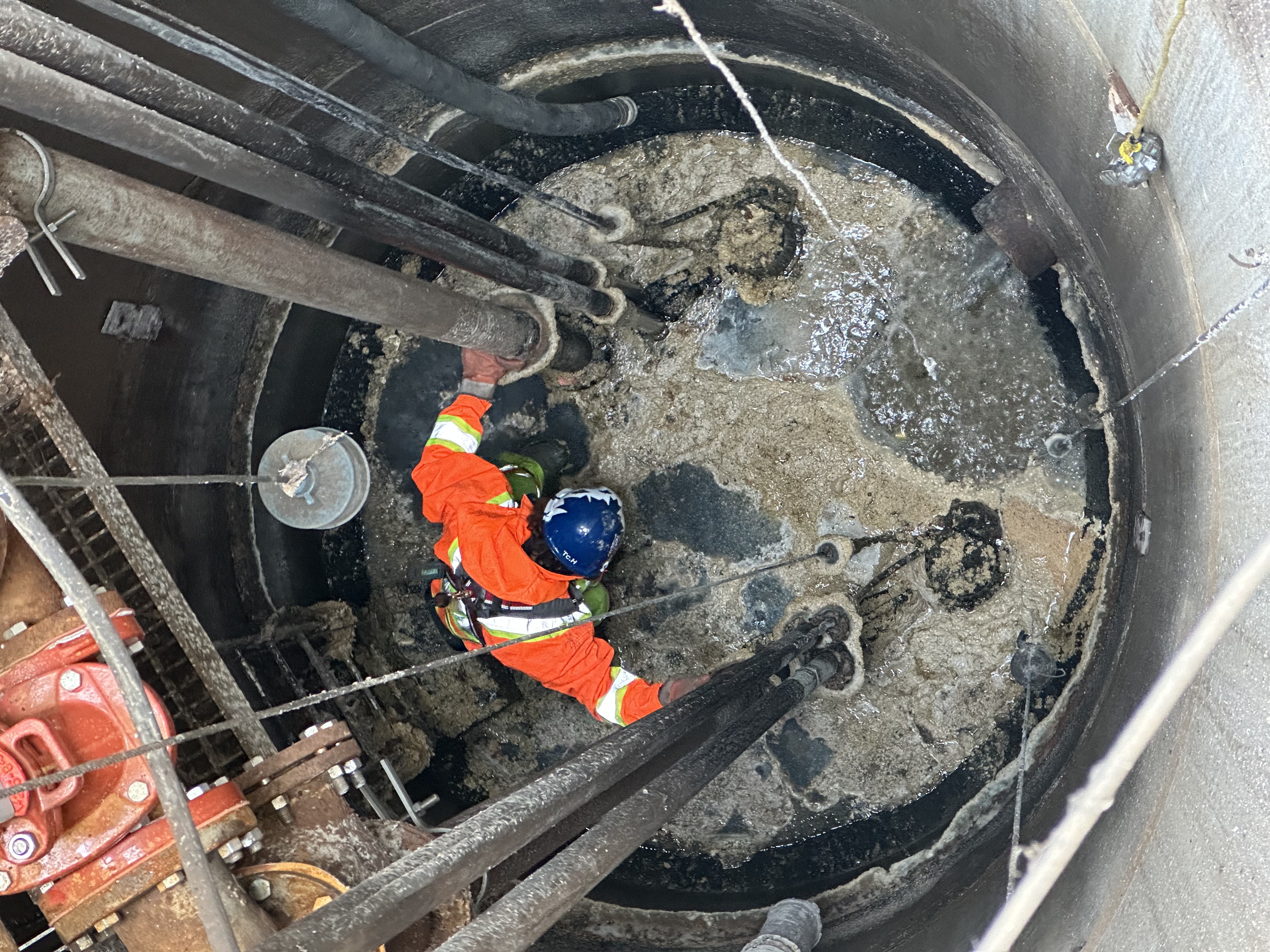Know how to properly dispose of cooking fats, oils and greases

We’re reminding residents and restaurant operators to never flush cooking fats, oils and greases, or pour them down the drain. They clog pipes, creating sewer back-ups and problems with treatment equipment.
Our video (below) shows the challenges when workers enter confined spaces to manually clear clogs that are created by improperly disposing of cooking grease.
Residents and restaurant operators may not be aware of the problem with pouring cooking grease down the sink. We want you to know that these liquids will solidify in sewer pipes and can build up to create sewer clogs and even a sewer back-up in your home. Protect your pipes and the health and safety of workers: review this information to know what to do instead.
Cooking oil, butter and margarine, meat fats, salad dressings, sauces, and gravies are all types of fats, oils and greases (FOG). When poured down the drain or flushed down the toilet, they solidify and build up inside plumbing pipes, creating a sewer back-up risk in your home. They also build up inside treatment equipment, resulting in costly repairs, as well as health and safety risks for workers.
See the problem firsthand
Watch this video showing the clearing of a recent sewer blockage at a Kingston sewage pumping station:
Proper disposal of FOG
- DO pour cooled grease, fat, or lard into a paper cup.
- Store the cup (with lid on) in your freezer.
- Let the material solidify and then place it in your Green Bin.
- DO soak grease up with paper napkins or paper towels and place them in your Green Bin. Consider reusing soiled napkins from the dinner table to reduce waste.
- DO scrape grease and food scraps from plates, pots, pans, utensils, grills, and cooking surfaces and place them in your Green Bin.
- DO wipe out greasy pots, pans, and utensils with paper towel. Soiled paper towels and napkins can be disposed of in your Green Bin.
- DO use a strainer in the sink to catch food scraps and other solids.
- DO inform family members, friends, and neighbours about the problem with FOG in the sewer system and how to keep it out.
- DO learn about proper waste disposal, using the City of Kingston’s online tool: https://www.cityofkingston.ca/resident/garbage-recycling/waste-tools/lookup
Residents can pick up three free FOG disposal cups, per residence, by visiting the self-service counter at 85 Lappan’s Lane (quantities are limited).
How to use the FOG cup
- Pour cooled grease, fat or lard into this cup.
- Store the cup (with lid on) in your fridge or freezer.
- Let the FOG solidify and then place this cup (and lid) in your Green Bin for disposal.
Information for restaurant operators
- Restaurant operators must ensure that grease traps and interceptors are installed, operated, and maintained in accordance with the manufacturer’s instructions.
- The equipment must be inspected and cleaned frequently to ensure that it is operating effectively.
- Remember to keep a log book of cleanouts.
For more information, visit our Know what to Flush web page.